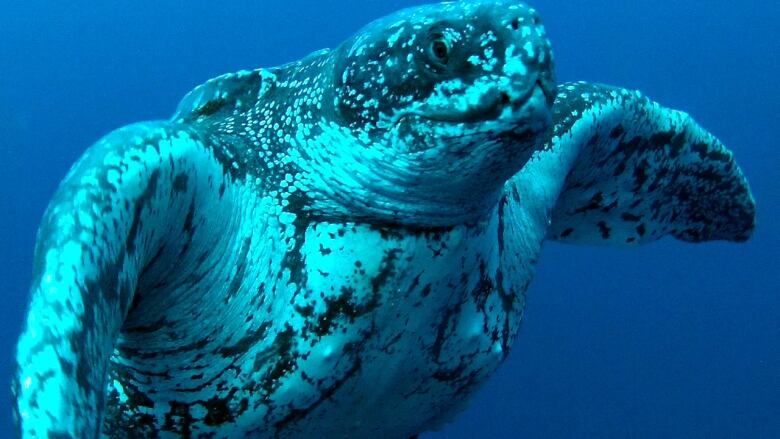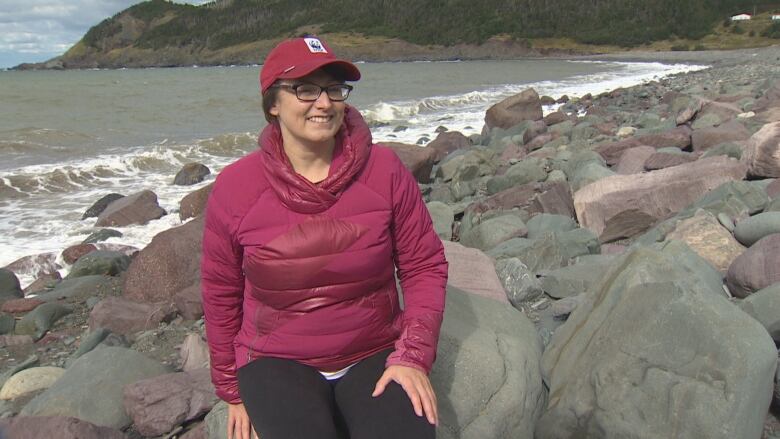Oil and gas out of N.L. marine protected areas, welcome in marine refuges
Canadian government forbids oil and gas from operating in marine protected areas

A federal government decision bannedoil and gas activity in a marine protected areaoffthe west coastof Newfoundland while welcoming it in a marine refuge off the east coast.
On Thursday, Fisheries and Oceans Canada officially established the Laurentian Channel marine protected area, a massive, ecologically sensitivepartof the Gulf of St. Lawrence just off the southwest coast of Newfoundland.
At nearly 12,000 square kilometres, it's more than twice the size of Prince Edward Island and the largestmarine protected areain the country.
"We have achieved a very important milestone," said SigridKuehnemund,vice-president of ocean conservation with World Wildlife Fund-Canada.
Its establishment came with a DFO decisionto keepindustry activity out ofall MPAs including mining, dumping, and seismic blasting which Kuehnemund wholeheartedly applauds.
That same decisionleft the door open for oil and gas in so-called marine refuges, like the Northeast Newfoundland Slope, off the east coast of the island.
For that, Kuehnemund has less enthusiasm.
"There is still much work to be done," she said.
The federal government committed to protecting 10 per cent of Canada's ocean and coastal areas by 2020, countingboth MPAs and marine refuges toward thegoal.

NE Newfoundland Slope refuge open for business
There isn't much oil interest in the Laurentian Channel Husky Energy owned an exploration licence there at one point, but nothing has ever been drilled in the region.
But in the Northeast Newfoundland Slope, oil companies are bidding millions for exploration licences, and a number have already been granted.
"We're very pleased that [Fisheries and Oceans Canada] has declared that this area can proceed with the types of oil and gas activities that have been going on in our province in the last number of decades," said Jim Keating, executive vice-president of Nalcor Energy.
Any other proposed oil activity in the refuge will be evaluated on a case-by-case basis, DFO said. Ifoil starts pumping in any of those licence areas, it will no longer count toward Canada's marine conservation goals.
Keating says he isfine with DFO's decision to forbid the industry from operating in marine protected areas, pointing out that the Laurentian Channel MPA makes up just over 0.6 per cent of the province's offshore area.
"It's significant by chunk by any stretch of the imagination but at the same time we realize that there's over 80 per cent of our offshore that's neither designateda protected area nor under licence from oil and gas activities," he said.

Home to leatherback turtle, right whale
The Laurentian Channelis home to the endangered leatherback sea turtle, various species of shark and the Northern wolfish, and has the highest population and only pupping grounds of black dogfish in Canada.
It's also home to the Northeast Atlantic'smost significant population of feathery, fluffy coral calledsea pens, Kuehnemundsaid. Sea pens are particularly vulnerable to anything that would dig up or disturb the sea floor.
He's a Pennatulacea from the Laurentian Channel but you can call him "Sea Pen" http://t.co/OKcpDAOWV6 pic.twitter.com/30c5CuhT5l
—@DFO_NLThe endangered North Atlantic right whale also swims through the channel each year to reach its feeding grounds, shesaid.
In 2017, DFOimposed strict speed limits on ships passing through an area of the Gulf northeast of the MPAafter more than 10 dead right whales washed up on surrounding shores in just a few months.
With files from Jane Adey and Zach Goudie












_(720p).jpg)


 OFFICIAL HD MUSIC VIDEO.jpg)
.jpg)



























































































